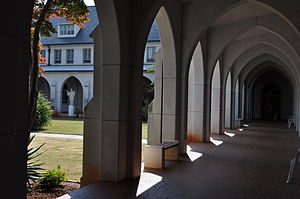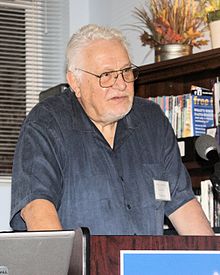I and many other readers have been interested in Roger Parvus’s alternative explanations for some aspects of Earl Doherty’s arguments. Roger has posted a detailed comment on Earl’s Part 12 Response to Bart Ehrman but I am repeating it here as a post in its own right. Where Earl argues that the incipient docetism addressed in the Ignatian letters is best explained as an early variant of the emerging belief that Christ came down to earth, Roger finds the simplest explanation in the Ignatian letters being written as a reaction against Marcionism — but not an “orthodox” reaction. Rather, Roger has argued that the Ignatian correspondence originated in the major Marcionite schismatic movement led by Apelles.
Before posting Roger’s comment in full here is the outline of Earl’s argument in Part 12:
- Are the Ignatian letters forgeries?
- What does “truly” mean for Ignatius:
- anti-docetism?
- historical fact?
- Ignatius knows no Gospels, even in 110 CE or later
- implications of this
- This is the year 110 (or later if the letters are forgeries) in Antioch, a stone’s throw from the Syrian-Galilean region where Jesus conducted his ministry, where the evangelists Mark and Matthew wrote (Matthew is commonly dated c.80 CE with a suggested provenance in Antioch itself!), and yet the bishop of that city does not possess a copy of a written Gospel?
- rumours of an allegorical tale interpreted as history
- [This can be explained if] Mark was originally written as a piece of symbolism, not meant as history, and it took . . . decades for the story’s basic features to filter out to the surrounding Christian world, through rumor and missionary contact, through expansion and redaction of the story in other nearby communities, eventually to be accepted by some as historical fact — particularly those who would have found it appealing and useful.
- no teachings of Jesus, no miracles,
- no apostolic tradition
- Not only does Ignatius not possess a copy of a Gospel, he also argues from a position which lacks a few other things. One of them is apostolic tradition, another is an appeal to simple history within his faith movement: the argument that “Christians have believed these things for generations.”
- Why did docetism arise in Ignatius’ time?
- two reactions to the historical Jesus
- The whole issue of docetism is a perplexing one. Why, whether here or in a developing gnostic community, would it suddenly appear after almost a century of traditional belief in an historical Jesus, during which no one voiced any objection to believing in a divine son of God who had actually suffered in flesh, who actually partook of human nature?
- The traditional view of docetism sees it as a sudden about-face by certain Christian teachers and thinkers, the complete rejection of a presumably universal view of Jesus held for three-quarters of a century as a human being born of a human mother and suffering in human flesh. What would explain this throwing of the Christian faith train into reverse?
- The solution is to realize that prior to the end of the first century, no one had believed the opposite. Christ was a heavenly figure who suffered, died and rose in the spiritual dimension. But at precisely the time when the first idea that Christ had been on earth arose (largely through an evolution within the Q sect and a misunderstanding of the Gospels which grew out of it) we find the first objections to a human Jesus, a philosophically-based resistance but one dependent on the new claim that the heavenly Son of God had been on earth in a human incarnation.
- This is why a type of docetism could arise in a ‘traditional’ Christian community (of the Pauline type) which had nothing to do with Gnosticism, and why it had not arisen earlier. It is why Ignatius cannot appeal to traditional belief, because both outlooks — an historical Jesus and a docetic Jesus — are of recent vintage, competing on the same level playing field.
- A Christ myth in Ignatius’ Ephesians
Roger Parvus’s response
As some Vridar readers are aware, my own theory is that the original author of the so-called Ignatians was Peregrinus and that he was a follower of the ex-Marcionite Apelles. And I think the two groups of opponents in the letters should be identified as Marcionites and proto-orthodox Christians—Marcionites, of course, being the docetic adversaries, and the proto-orthodox being the Judaizers.
I hold that Peregrinus wrote the letters in the early 140s with his execution at Antioch in view—a martyrdom that was thwarted when he was instead released by the governor of Syria. Peregrinus’ subsequent apostasy from Christianity rendered his letters unusable by Christians. That changed when later, toward the end of the second century, a proto-orthodox Christian made modifications to them, turning them into letters of “Ignatius.” (Those interested in a fuller exposition of the theory can find it on this Vridar site in a series of posts entitled “The Letters Supposedly Written by Ignatius of Antioch”).
Earl Doherty makes some excellent observations regarding the Ignatians. He has noticed not just one but several peculiarities that, to my knowledge, have been overlooked by patristic scholars. I maintain, however, that my theory can plausibly account for the curious features. They in fact confirm the identifications I have made above of the principal parties involved.
Here’s what I mean:
1. Non-gnostic docetism
Earl points out
that Ignatius is also dealing with an issue of docetism, although it seems not to be within any gnostic context . . . and no other doctrines characteristic of Gnosticism contribute to raising his ire.
To me this feature is an additional confirmation that the prisoner’s docetic adversaries were Marcionites. Marcion’s system lacked many doctrines characteristic of Gnosticism. It didn’t include, for example, the many divine emanations that were a part of so many Gnosticisms. Or, another example, the fallen sparks of divinity in man. Earl is aware of this Marcionite peculiarity. On page 293 of his book Jesus: Neither God Nor Man he writes:
Ironically, the most famous ‘Gnostic,’ Marcion, almost fails the Gnosticism test, since he lacked more than one essential feature of that generality.
But perhaps because Earl dates the Ignatians to no later than the third decade of the second century, he appears not to have considered the possibility that the docetists in question were Marcionites. Continue reading “Debating the Place of the Ignatian Letters in Christian Origins: Doherty & Parvus”
Like this:
Like Loading...





 Physicist
Physicist 
